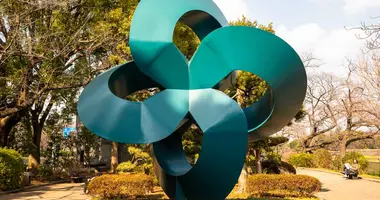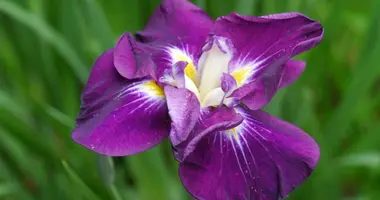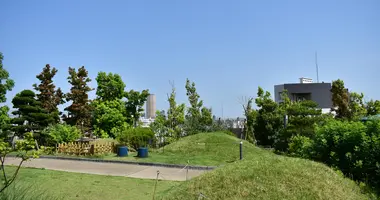Shinjuku Gyoen Park 新宿御苑
- Published on : 07/10/2020
- by : Japan Experience
- Youtube
Shinjuku Gyoen Park, nicknamed the ‘urban oasis’, is one of the largest parks in Tokyo. A favorite place for a stroll with Tokyoites and visitors, it is one of the best places to see the sakura.
A Guide to Shinjuku Gyoen Park
Shinjuku Gyoen Park is a large, 144 acre (58.7 hectare) park in Tokyo's Shinjuku ward, and is an urban island of Japan's seasonal beauty. Shinjuku Gyoen has gardens, woods, a large and picturesque pond, and hundreds of cherry trees (sakura) which make Shinjuku Gyoen one of Tokyo's most popular cherry blossom viewing venues in early April.
Shinjuku Gyoen is home to more than 20,000 trees from all over the world and is a nature lover's delight in the variety and beauty of its flora, yet with a skyline punctuated with towers.
Shinjuku Gyoen includes a French formal garden, an English landscape garden, a Japanese traditional garden, a "Mother and Child Forest", a maple hill, an azalea hill, several ponds, and a Taiwan Pavilion. Shinjuku Gyoen's great open spaces, forested areas, and lovely groves of cherry and plum trees make it the ideal retreat for individuals, couples and families alike who want a taste of nature without having to leave Tokyo.
History of Shinjuku Gyoen Park
Shinjuku Gyoen began life in 1590 as part of a grant of land that the great warlord who, from 1600 would rule Japan, Tokugawa Ieyasu, made to one of his vassals, Naito Kiyoshige.
Almost 300 years later, when Japan started modernizing, Shinjuku Gyoen was the site of Japan's first early experiments with foreign horticulture and forestry, beginning in 1872. Then in 1879 the land became the Shinjuku Imperial Botanical Garden under the control of the Imperial Household Agency.
In 1906, the name changed to Shinjuku Gyoen National Garden when it was remodeled by the French landscaper Henri Martine, a professor at the Versailles horticultural college. The opening of the newly named Shinjuku Gyoen National Garden coincided with Japan's victory in the Russo-Japanese War (see also Hibiya Park) and was attended by the Emperor himself.
Shinjuku Gyoen's famous cherry blossoms (sakura) date from 1917, and its chrysanthemums from 1929. The sakura and the chrysanthemums remain, but the small zoo that was set up in 1926 is no longer.
In 1947, following the democratization of Japan after World War Two, Shinjuku Gyoen changed from being imperial to national land, and was opened to the public under the auspices of the Ministry of Health, Labor and Welfare in 1949. In 1971, administration of Shinjuku Gyoen was taken over by the Ministry of the Environment.
Shinjuku Gyoen Facilities
Also on the grounds of Shinjuku Gyoen Park are:
- Information center and art gallery, 9 am-4.30 pm: near the Shinjuku Gate. To be checked out before you go through the Park's gates. No access from inside the Park. English maps of the Park available on request.
- Greenhouse: admittance from 11 am to 3 pm (gates close 3.30 pm): near the Okido Gate.
- Old Western-style Imperial Rest House: built in 1896 for the Emperor and now designated an Important Cultural Property. Open on the second and fourth Saturday of the month from 10 am to 3 pm: between the Okido and Shinjuku gates.
Address, timetable & access
Shinjuku Gyoen Park
Address
11 Naitomachi, Shinjuku City
160-0014
Japan
Timetable
October 1 - March 14: 9 am to 4 pm (gates finally close at 4.30 pm). March 15 - September 30: 9 am to 5:30 pm (gates finally close at 6 pm). Open every day except Monday (closed Tuesday if Monday is a national holiday).Price
500 JPY if 15 years old or over; 250 JPY for 6-14 year olds; Free for 5 year olds and youngerAccess
Shinjuku Gyoen has three gates: the Shinjuku Gate, Okido Gate, and Sendagaya Gate.Website
https://www.env.go.jp/garden/shinjukugyoen/english/2_guide/guide.html





























